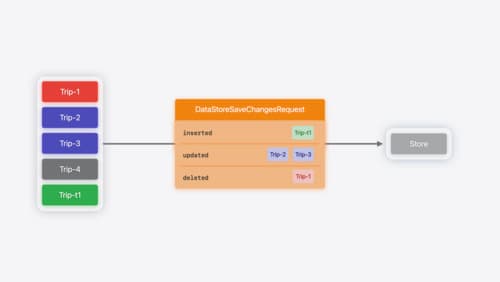what is swift data
Asked on 2024-08-03
1 search
Swift Data is a framework introduced in iOS 17 that allows developers to model and persist their app's data across all of Apple's platforms. It provides a lightweight API that integrates naturally with Swift, enabling developers to define their data schema with minimal additions to a normal Swift class. Here are some key features and capabilities of Swift Data:
-
Modeling and Persistence: Swift Data makes it easy to build your app's model layer and persist it across app launches. It supports schema modeling, migration, graph management, and synchronization with CloudKit (What’s new in SwiftData).
-
Custom Data Stores: By default, Swift Data uses Core Data to store information, but it also allows for custom data stores. This means you can use alternative backends like SQLite, remote web services, or even collections of JSON files (Platforms State of the Union).
-
Schema Definition: You can define your schema using the model macro, and further refine it with attributes and relationships. New additions include the index and unique macros, which help optimize queries and ensure data integrity (Platforms State of the Union).
-
Query Optimization: Swift Data supports complex filters and a new expression macro to improve query performance (What’s new in SwiftData).
-
History Tracking: Swift Data provides access to the history of changes in a datastore, making it easy to inspect recent changes and track local changes that need to be synced to a remote service (Platforms State of the Union).
-
Custom Store Implementation: Adopting a custom store in Swift Data is straightforward with the new datastore protocol, allowing support for any persistence backend (Create a custom data store with SwiftData).
For a detailed overview and to learn about the latest features, you can watch the session What’s new in SwiftData.

What’s new in SwiftData
SwiftData makes it easy to add persistence to your app with its expressive, declarative API. Learn about refinements to SwiftData, including compound uniqueness constraints, faster queries with #Index, queries in Xcode previews, and rich predicate expressions. Join us to explore how you can use all of these features to express richer models and improve performance in your app. To discover how to build a custom data store or use the history API in SwiftData, watch “Create a custom data store with SwiftData” and “Track model changes with SwiftData history”.

Create a custom data store with SwiftData
Combine the power of SwiftData’s expressive, declarative modeling API with your own persistence backend. Learn how to build a custom data store and explore how to progressively add persistence features in your app. To get the most out of this session, watch “Meet SwiftData” and “Model your schema with SwiftData” from WWDC23.

Platforms State of the Union
Discover the newest advancements on Apple platforms.
